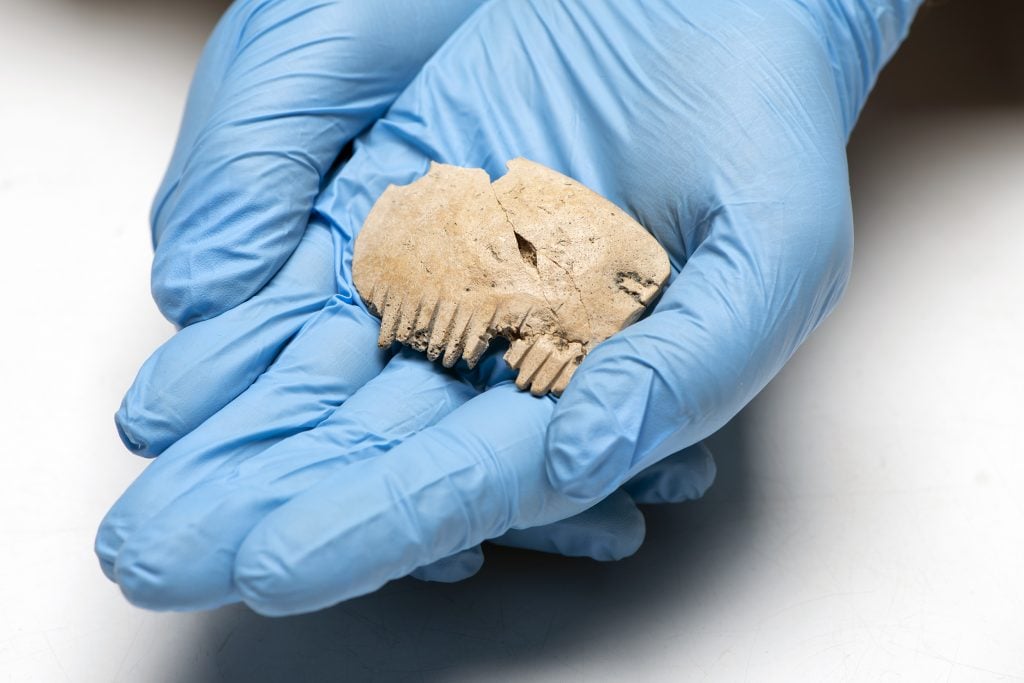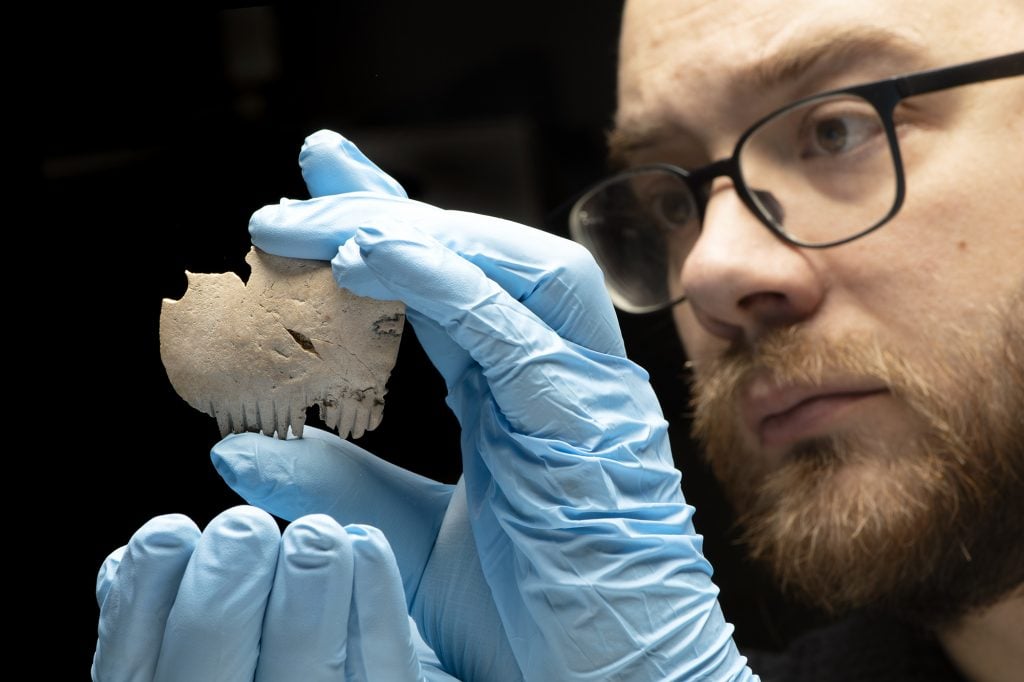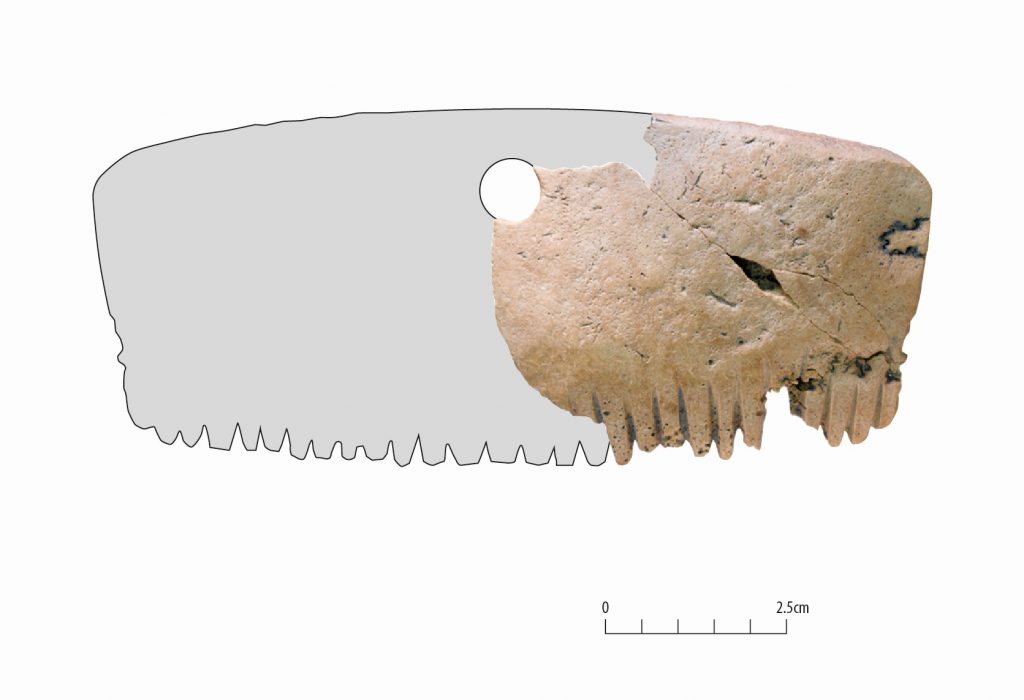Archaeology & History
Archaeologists Believe That an Iron Age Comb Discovered Along a U.K. Highway Was Made From a Human Skull
The tool, which may have been worn as an amulet, is evidence of a culture that revered the human head.

The tool, which may have been worn as an amulet, is evidence of a culture that revered the human head.

Caroline Goldstein

A stone’s throw from a Tesco Extra grocery store and a Ramada hotel, in the small town of Bar Hill in Cambridge, England, archaeologists made a startling discovery: the remains an ancient comb, likely dating to the Iron Age. Now, after months of research, a team at the Museum of London Archaeology (MOLA) has discovered that the comb wasn’t just fashioned from any bone, but part of a human skull.
A whole host of practical objects including combs have been carved from bones, horns, and tusks for centuries, though typically they were sourced from animals. According to researchers at MOLA, this is only the third human-bone comb ever discovered, and the other two were found within 10 miles of the Bar Hill site, suggesting that “it may have been an Iron Age tradition unique to this part of Britain.”

MOLA Find specialist Michael Marshall examining the Bar Hill comb. Photo: © MOLA.
What sets this bone apart from other discoveries, is the lack of wear on the teeth of the comb, so it may not have been used to brush hair at all, but perhaps worn as an amulet.
“The Bar Hill Comb may have been a highly symbolic and powerful object for members of the local community,” said MOLA Find’s specialist Michael Marshall in a statement. “It is possible it was carved from the skull of an important member of Iron Age society, whose presence was in some way preserved and commemorated through their bones.”

Reconstruction of Bar Hill Comb. Photo: © MOLA.
According to historians, the human skull was revered by many living in the British Isles during the Iron Age. Both carved stone heads and skulls served as talismans, as evidenced in ritual practices documented by archaeologists and in folklore. In addition to the lack of wear-and-tear on the comb’s tines, remnants of a circular hole drilled into the top of the object point to it being tied to a string to wear.
Even with the historical record, Marshall and his colleague, osteologist Michael Henderson, still speculate about the details of the tool. The unevenness of the dips and valleys carved into the bone to serve as the comb’s teeth, they mused in a press release, could be an intentional design meant to mimic the “natural sutures that join sections of the human skull.”
It remains a rather hairy mystery.
More Trending Stories: